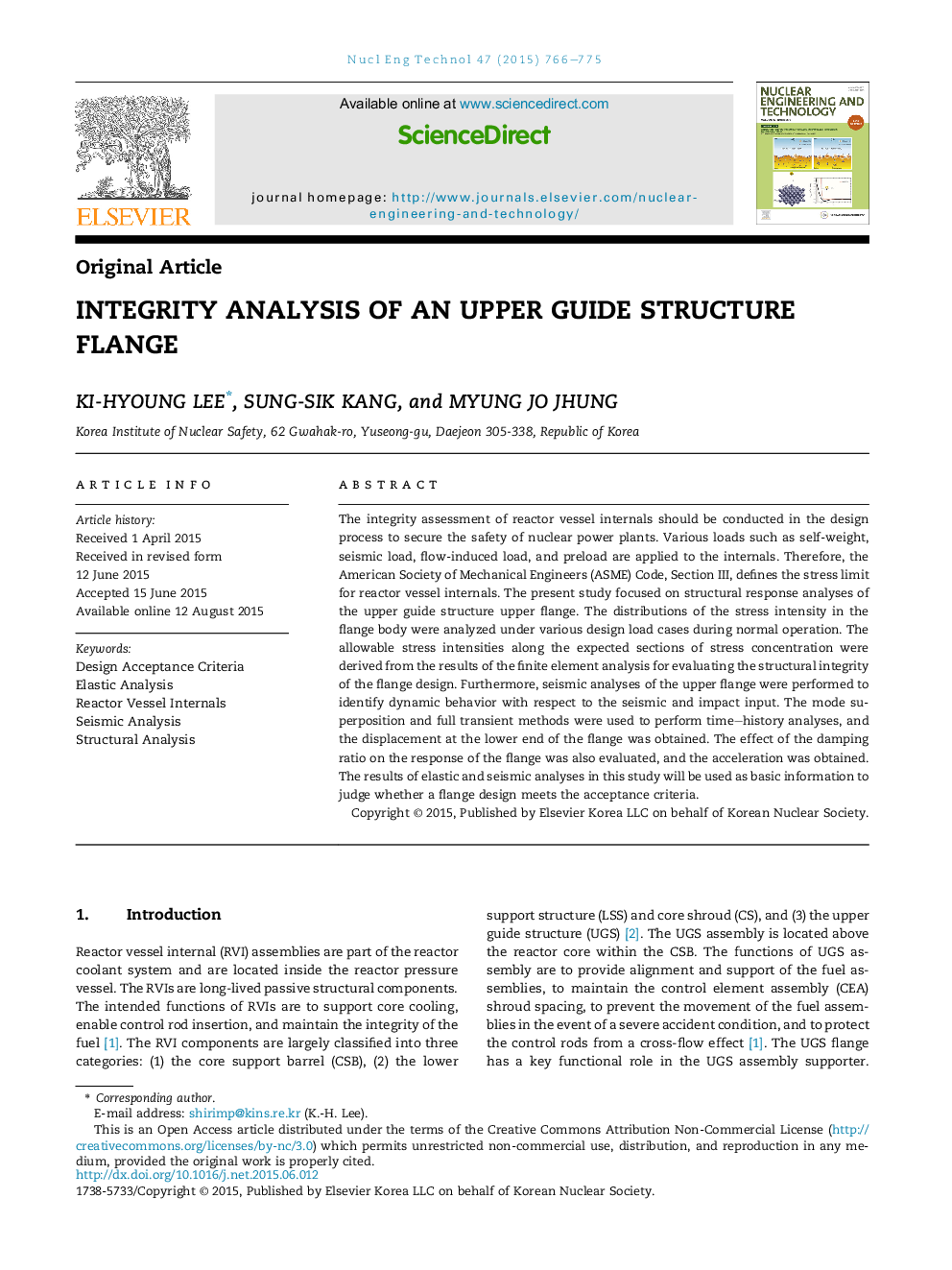| Article ID | Journal | Published Year | Pages | File Type |
|---|---|---|---|---|
| 1740121 | Nuclear Engineering and Technology | 2015 | 10 Pages |
The integrity assessment of reactor vessel internals should be conducted in the design process to secure the safety of nuclear power plants. Various loads such as self-weight, seismic load, flow-induced load, and preload are applied to the internals. Therefore, the American Society of Mechanical Engineers (ASME) Code, Section III, defines the stress limit for reactor vessel internals. The present study focused on structural response analyses of the upper guide structure upper flange. The distributions of the stress intensity in the flange body were analyzed under various design load cases during normal operation. The allowable stress intensities along the expected sections of stress concentration were derived from the results of the finite element analysis for evaluating the structural integrity of the flange design. Furthermore, seismic analyses of the upper flange were performed to identify dynamic behavior with respect to the seismic and impact input. The mode superposition and full transient methods were used to perform time–history analyses, and the displacement at the lower end of the flange was obtained. The effect of the damping ratio on the response of the flange was also evaluated, and the acceleration was obtained. The results of elastic and seismic analyses in this study will be used as basic information to judge whether a flange design meets the acceptance criteria.
